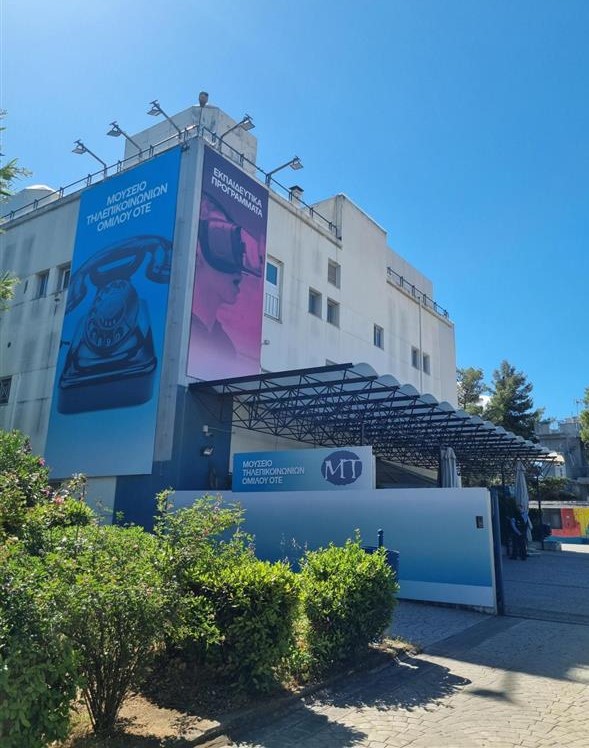
In 1987, the Urban Telecommunications Centre (T/C) of Nea Kifissia becomes a Museum "for the temporary housing of the Museum of Telecommunications Systems Materials, until it is moved to its final location".
1972. Plans for a Museum in the OTE Hall
In 1972, in the first study for the construction of the OTE Administrative Building in Maroussi, an area of 800 m2 was planned for housing the Museum. A year earlier, a group of OTE and Hellenic Post (ELTA) employees had proposed to the management the establishment of a "Museum of Telecommunications and Postal Systems', a proposal which, as it turned out, was well received.
And while the building work on the building of the building was progressing, the Directorate of Research, in a recommendation in March 1979, noted that "the thought of housing the museum in a showcase at the entrance to the Administrative Building should be ruled out" and proposed the construction of a building of 1,000 m2 on the land of the Administrative Hall, "to allow its development and evolution into a space accessible to the public".
1979-1987: Change of plan and proposal for another site
In June of the same year, OTE's commander, Athanasios Sekeris, in response to the proposal, indicated that the Museum should be located where the OTE Schools would be housed in the future. For this reason, he suggested that the Directorate of Research should "revisit the whole issue when the study of the OTE Schools building begins".
However, the issue of the Museum's installation at the Schools, the foundation of which began in 1984 at the Psalidi site in Maroussi, did not proceed. Instead, on 27 July 1987, it was decided to give a section of the second floor of the Nea Kifissia Urban Telecommunications Centre (T/C) "for the temporary housing of the Museum of Telecommunications Systems Materials until it can be moved to its final location". One year later, the Board of Directors of OTE decided that the Museum should remain permanently in the premises of the T/C of Nea Kifissia.
1989. The T/C of Nea Kifissia becomes a museum
The Telecommunications Centre at 25 Proteos Street was put into operation in 1982 and, like the other T/Cs that began to be established in the 1950s and 1960s, it played a central role in routing telephone calls and data to and from the end users (homes, businesses, etc.) in its area of responsibility.
On the second floor of the building, in a 300 m2room, a permanent exhibition of telecommunications equipment was opened in 1989 and the Museum was inaugurated in 1990. In 1994, after the installation of the digital centre on the second floor and the evacuation of the machinery of conventional technical centres, the entire first floor, with a capacity of 500 m2, was freed up and given over entirely to the Museum, thus completing its transformation from an industrial to a cultural landmark.
The only Telecommunications Museum in the country is still here!
Today, the Museum has a capacity of 1,000 m2, as both floors of the building serve the needs of the Museum. In addition, the first floor was renovated in 2017 and the second floor in 2022-2023, and since 2017 an Archive-Library space has been created on the ground floor of the building.
The new configuration of the spaces and exhibits serve the needs of the Museum and enable the public to comfortably navigate its halls. However, the timeless need to create a building designed from the outset to meet the requirements of a modern museum space remains.
In 1999, moreover, the competent authorities were instructed to examine "from the point of view of feasibility" the issue of the construction of a new modern museum on privately owned land in Psalidi, Maroussi. In this context, on 23 May 2024, the previous OTE management announced the relocation of the Museum in the future to the historic building of the YMA-NYMA, at 85 Patision Street.
With the 35th anniversary of the Museum's foundation and one year after the announcement of the New Museum, the 1979 recommendation to find a location accessible to the public that will allow the Museum's development and evolution seems more relevant than ever. The course, the extroversion, the actions and ultimately the public's love for the Telecommunications Museum brand, which is linked to the modernization and development of the country's most important telecommunications company, points the way to its future.